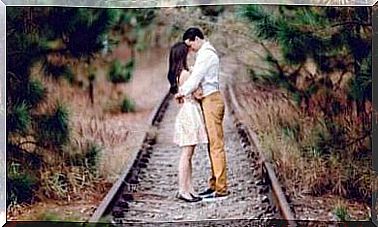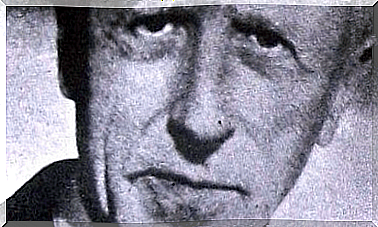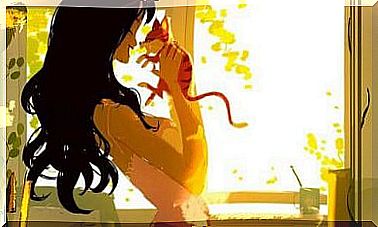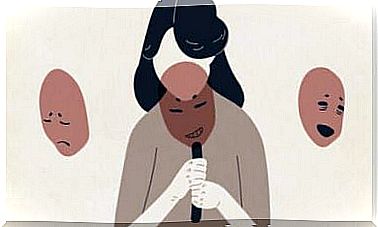Plato’s Allegory Of The Cave: The Double-edged Knife Of Our Reality
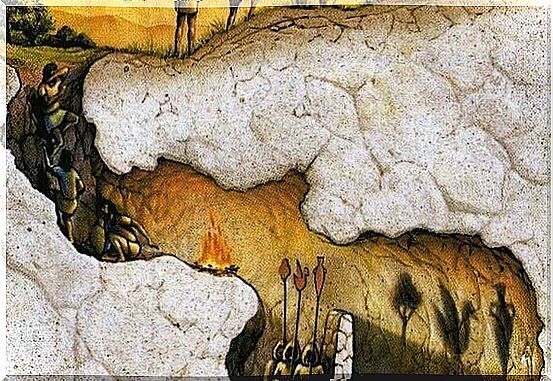
Plato’s allegory of the cave helped us understand the way this philosopher saw the world. He recognized a connection between the physical and the fantasy world, which leads to a reality of light and shadow : On the one hand, we have reality as it is. On the other hand, we encounter a fictional reality where our opinions and ideas play the main role. But before we go any further into the matter, we would like to deal with what the legend of the allegory of the cave tells us.
The legend is about people who have been chained in the depths of a cave since birth, where they can only see one wall of the cave. They have never been able to escape this cave, and they have never been able to look behind them to find out where the chains that held them came from. There is a wall in front of them and a little behind them a campfire. Men move between the fire and themselves, carrying objects back and forth. Thanks to the fire, the prisoners see the shadows of the objects cast on the cave wall.
I saw pictures that were lies and false truths. But how could I have seen it as something else when the only thing I saw from a young age was real?
A fictional reality
Humans have only seen the same thing since the day they were born, so they didn’t develop any interest in turning around and finding out what was creating these shadows. But that was a deceptive and artificial reality. These shadows distracted from the truth. Still, one of them dared to look back. But one man finally managed to break free from his chains in spite of everything:
At first he was confused and everything bothered him, especially this light that he had behind him, the light of the fire. So he began to get suspicious. Did he really believe that the shadows were the only thing that existed when they weren’t? The further he went, the more his doubts attracted him to the possibility of returning to his shadows.
But with patience and effort, he managed to get ahead. Little by little he got used to what was so unknown to him. He didn’t let the confusion or fear overtake him and climbed out of the cave. When he ran back to tell his friends what he had seen, they just made fun of him. It was sheer contempt that showed the prisoners of the cave’s disbelief at what the adventurer was telling them.
It is interesting how this vision that the legend of the allegory of the cave offers us can be carried over to actuality. It is this belief that we all follow and about which we are judged and criticized for reconsidering and disagreeing. We should not forget that we have just adopted many of our absolute beliefs without questioning them, without thinking about whether they are actually true.
For example, if we think that a mistake is a failure, that can lead to the immediate termination of any project, no matter how small an incident. Otherwise, if we do not allow ourselves to be misled by this idea, we will arouse our curiosity and a mistake is no longer an exclusively negative demon. When we change our perspective, we no longer fear it and, moreover, we are still able to learn from mistakes.
Finding a way out of the cave is a difficult process
The man who, in the legend of the allegory of the cave, decides to free himself from the chains that hold him captive, makes a very difficult decision that is by no means valued by his comrades, but rather viewed as an act of rebellion. Something like that is not welcomed and that could have dissuaded him from trying. According to his decision, he must therefore go his own way, conquer this wall this fire and finally approach the exit, which had aroused so much suspicion in him and blinded him. The doubts tear him apart and he no longer knows what is reality and what is not.
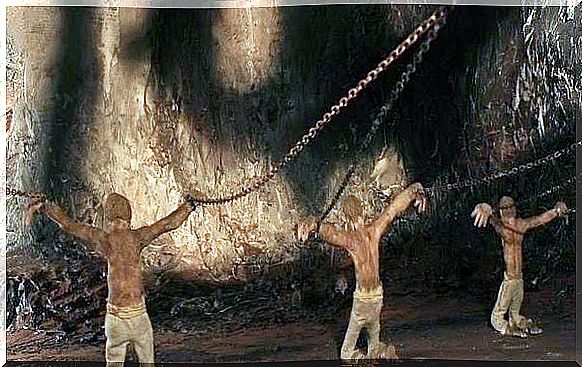
He has to break away from his beliefs that he has had for a long time. Opinions that are not only stuck, but also form the basis of the deeply rooted perception of the world. But the further he goes towards the exit of the cave, the more he notices that what he believed was not the truth at all. What is left with him then? To convince the others who made fun of him of the freedom that awaits them if they bring themselves to break with the ubiquitous ease with which they live?
The legend of the allegory of the cave shows us ignorance as this reality that becomes uncomfortable when we become aware of it. As opposed to the slightest chance that there is another possible worldview, history tells us that our habit prevents us from perceiving what appears to be a threat to our deadlocked routine.
No more shadows are cast, the light is no longer artificial and the air is already caressing his face.
Perhaps it is because of our humanity that we do not want to do without this shadowy world. But what we can do is try to get to the light, because there the shadows become more and more evident. Perhaps this perfect and symbolic world of imagination is a utopia for our nature, but that doesn’t mean that it is better to ignore our curiosity than to escape the convenience of continuing to be part of something we believe in today , or think to believe.
The older we get, the more doubts, discrepancies and questions help us to take those blinders off our eyes, which sometimes make life seem much more difficult than it really is.
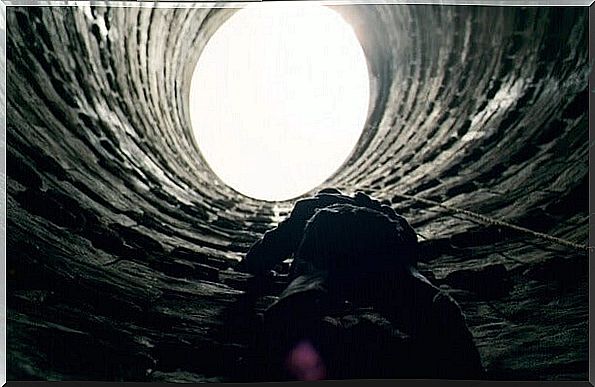
3 Common Beliefs That Block Us
Humans are a vulnerable species,
both physically and physically from birth … >>> More
